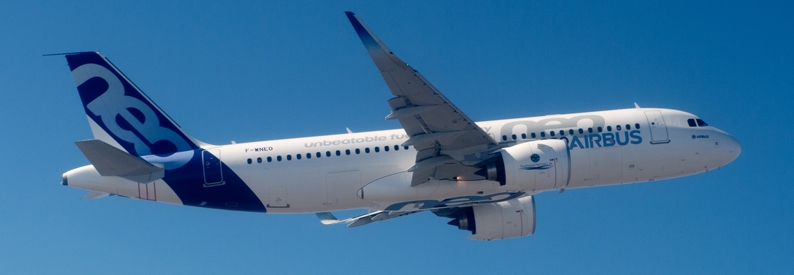Airbus Accelerates Testing of Advanced Wing Technology for A320 Successor Aircraft

Airbus is intensifying its testing of innovative wing technology as it paves the way for a successor to its highly popular A320 series. The aircraft manufacturer aims to develop longer, lighter, and more slender wings with folding wingtips to enhance sustainable flying. However, the challenge lies in reducing costs associated with these advancements.
British Industry Minister Nusrat Ghani inaugurated a wing technology plant in southwest England, which will contribute to the design and construction of state-of-the-art wings. This facility aims to facilitate the creation of wings that are more efficient, feature advanced characteristics, and help achieve sustainable aviation.
Wing of Tomorrow Program
Sue Partridge, head of Airbus’ Wing of Tomorrow program, highlighted that the initiative focuses on preparing technologies for the next generation of Airbus aircraft, regardless of specific details. The program’s goal is to develop cutting-edge composite technologies that reduce wing weight while ensuring cost-effectiveness and compatibility with high production rates.
As Airbus progresses with its Wing of Tomorrow program, Boeing is also researching its own concept called Transonic Truss-Braced Wings, which explores elongated and ultra-light designs. The choices made by both manufacturers regarding wing design, production methods, and engine advancements will shape the competition in the aircraft industry for years to come.
Focus on Future Single-Aisle Aircraft
While the research conducted under the Wing of Tomorrow program has broader implications, attention is particularly directed toward a future single-aisle aircraft, potentially succeeding the A320. Airbus has projected a possible introduction of this aircraft between 2035 and 2040. The development of demonstrator models aims to advance composite technologies, achieving lighter wings at an appropriate cost for high-rate production.
The utilization of composites in wings presents challenges due to higher production costs. This challenge is particularly significant for cost-sensitive aircraft like the A320 and Boeing 737. Airbus is engaged in discussions with multiple suppliers to reduce costs and enhance production efficiency. Additionally, the introduction of carbon wings to single-aisle jets may require a manufacturing revolution, as the current production targets are ten times higher than those for larger aircraft.
Airbus is exploring the possibility of manufacturing wings without autoclaves, which are currently used for curing aerospace composites. This alternative approach, already employed in a new Russian jet, requires significant investment and progress in cost reduction to be viable for Airbus or Boeing production volumes.
Future Wing Design and Timeline
As wing length increases, testing at the historic Filton site includes folding wingtips to accommodate parking gates, akin to Boeing’s 777X. Longer and slender wings are crucial for improved fuel efficiency. Airbus has not disclosed a timeline for finalizing the selection among various technologies being tested, but analysts suggest that for a model expected in 2035, the project would need to commence by 2027-28.
Airbus is open to exploring the use of new technologies for upgrading existing models like the A321, while industry sources suggest that Airbus could leverage the research for a potential stretch of the A220. The details of the “A220 Stretch” project remain undisclosed, but it is anticipated to involve new wings and engines, potentially entering service by 2030.
Airbus’s commitment to advancing wing technology underscores its ambition to develop future aircraft with enhanced efficiency and sustainability. Continued research and development in this field will shape the aerospace industry’s landscape, driving innovation for years to come.
Sources: AirGuide Business airguide.info, airbus.com, aviationweek.com
